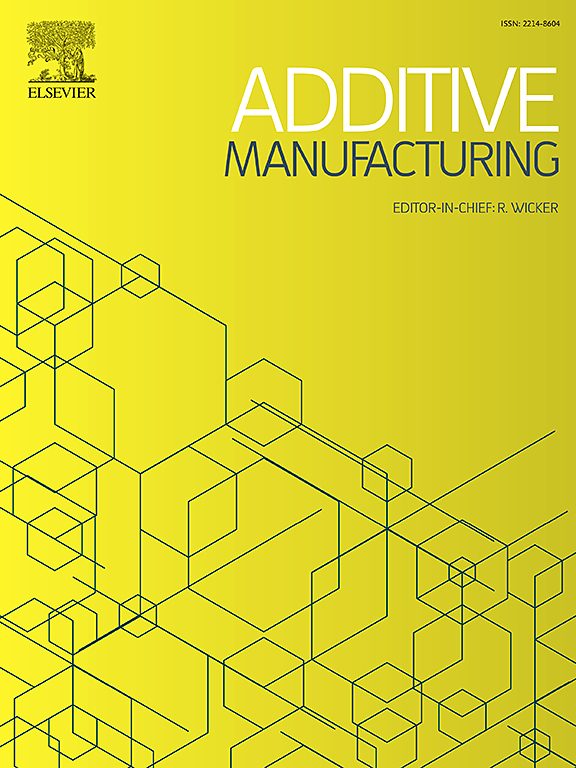Mechanical improvement of basalt fiber reinforced cementitious material for binder jetting 3D printing
IF 10.3
1区 工程技术
Q1 ENGINEERING, MANUFACTURING
引用次数: 0
Abstract
Binder jetting 3D printing (BJ3DP) of cementitious material exhibits remarkable dexterity in printing complex or customer-tailored architectural components due to the support of powder. The length distribution and content of basalt fibers are optimized to achieve uniform dispersion of long fibers in cement powder and the synergy between printability and mechanical enhancement of composite materials. A high-speed mixer is used to break and disperse fibers into cement powder. Effect of working parameters, such as the mixing time, original fiber length and content, on printability and mechanical properties are exploited. Different post-processing methods are attempted to enhance the strength of the printed specimens. The successful printing of highly complex hollow thin-wall structures demonstrates the dexterity and high accuracy of BJ3DP using fiber reinforced cementitious materials. Test results show that higher fiber content and fiber length tend to negate spreadability of powders and the dimensional accuracy of printed specimens. The directional alignment of fibers is more remarkable for longer fibers. The printed specimens with 12 mm fibers (1.5 %) show maximum flexural strength of 13.52 MPa, which is 62.5 % higher than non-reinforced control specimens. The basalt fiber-reinforced specimens show obvious anisotropy in compressive strength and ultrasonic wave velocity due to basalt fiber orientation. The post-processing method of SiO2 particles in silica sol impregnation adhere each other and fill voids in the matrix and result in a denser material, thus effectively enhancing the flexural and compressive strengths to 14.27 MPa and 37.67 MPa, respectively.
求助全文
约1分钟内获得全文
求助全文
来源期刊

Additive manufacturing
Materials Science-General Materials Science
CiteScore
19.80
自引率
12.70%
发文量
648
审稿时长
35 days
期刊介绍:
Additive Manufacturing stands as a peer-reviewed journal dedicated to delivering high-quality research papers and reviews in the field of additive manufacturing, serving both academia and industry leaders. The journal's objective is to recognize the innovative essence of additive manufacturing and its diverse applications, providing a comprehensive overview of current developments and future prospects.
The transformative potential of additive manufacturing technologies in product design and manufacturing is poised to disrupt traditional approaches. In response to this paradigm shift, a distinctive and comprehensive publication outlet was essential. Additive Manufacturing fulfills this need, offering a platform for engineers, materials scientists, and practitioners across academia and various industries to document and share innovations in these evolving technologies.
 求助内容:
求助内容: 应助结果提醒方式:
应助结果提醒方式:


